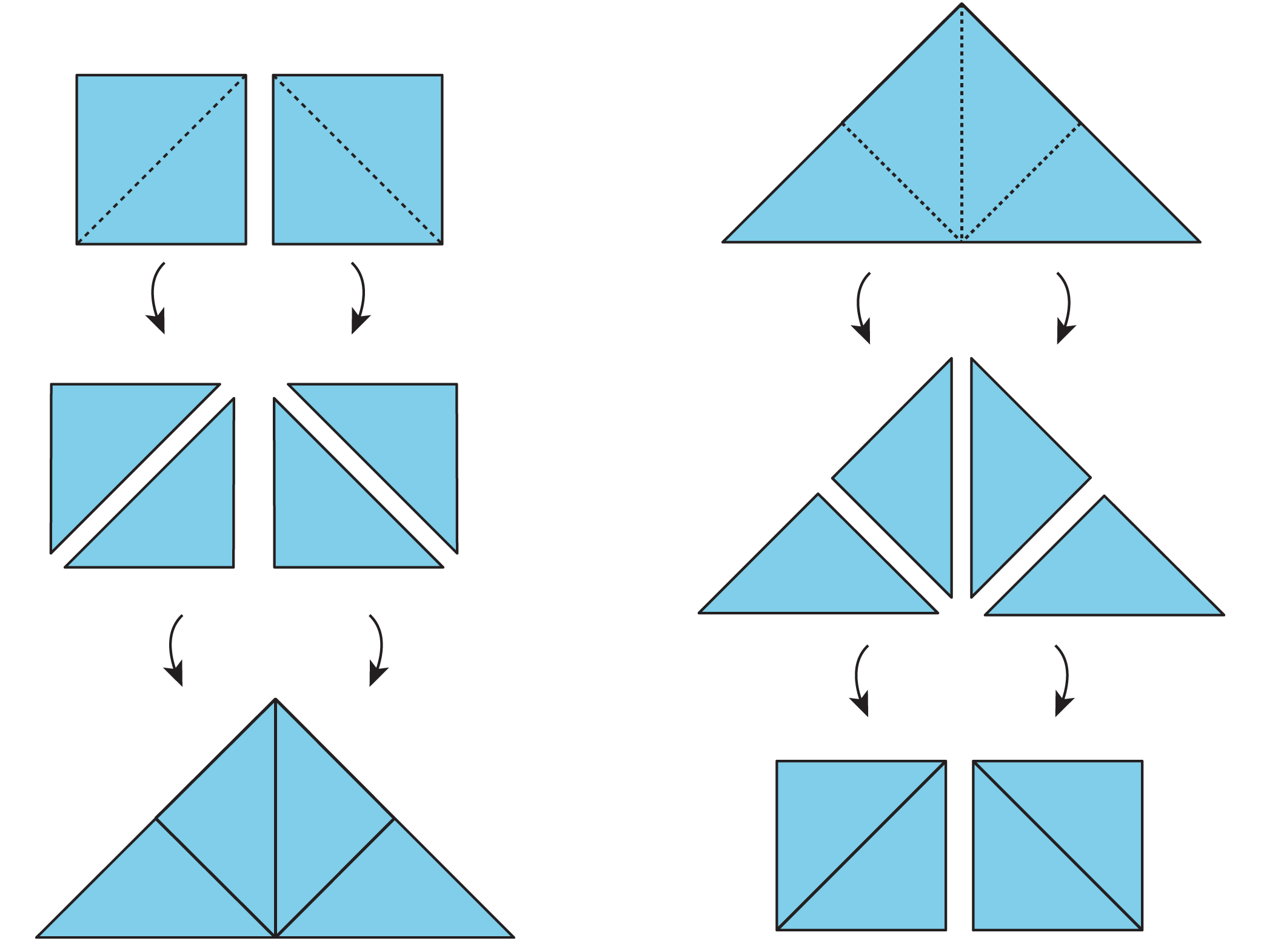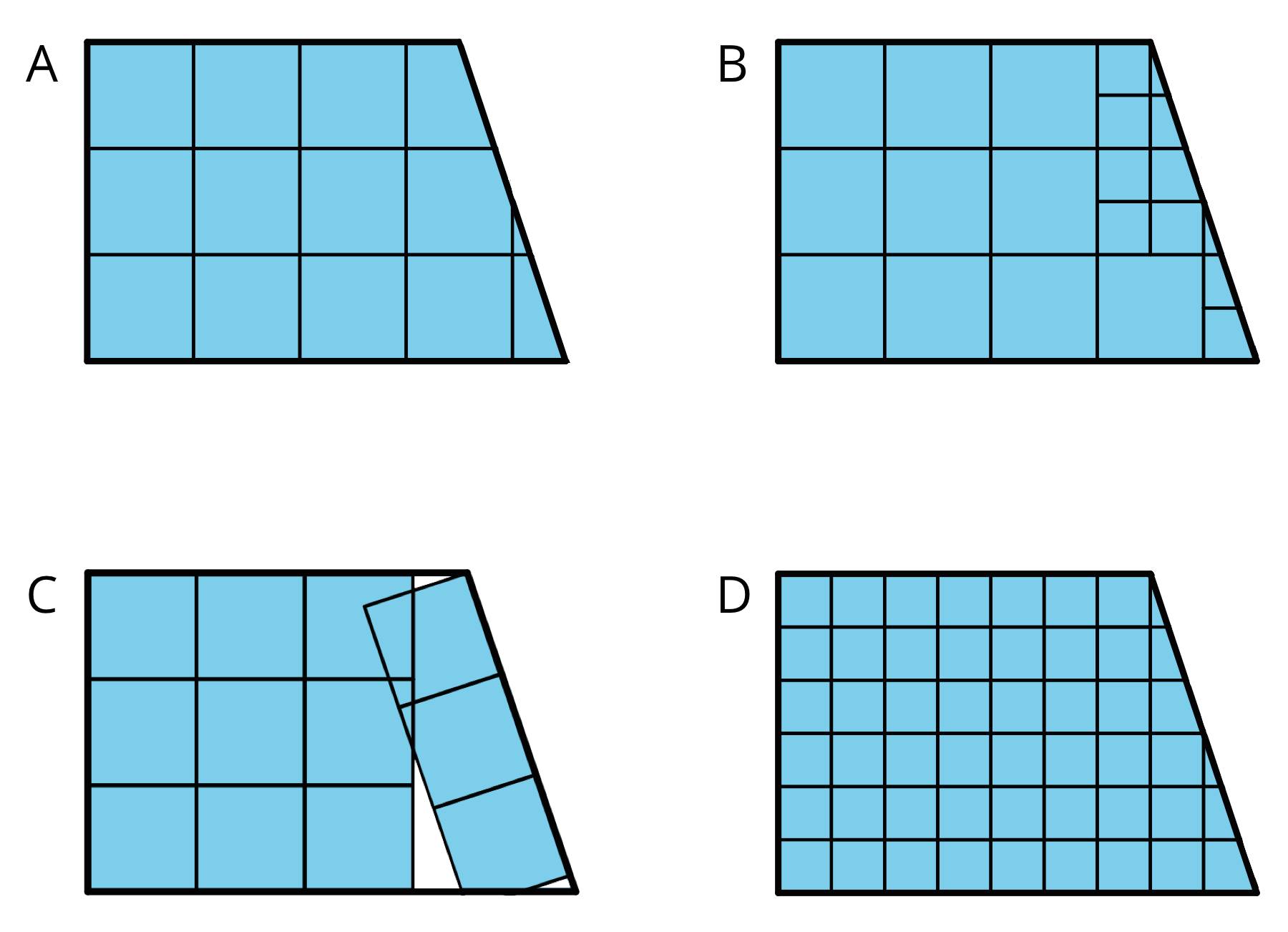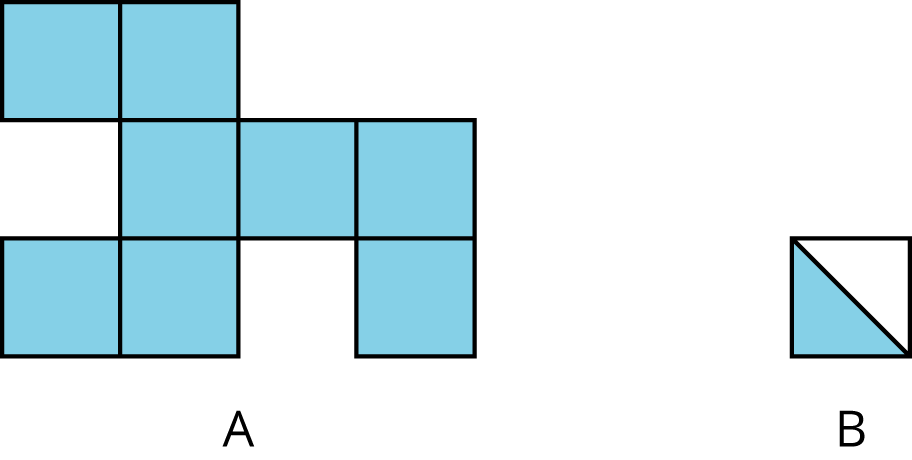Here are two important principles for finding area:
-
If two figures can be placed one on top of the other so that they match up exactly, then they have the same area.
-
We can decompose a figure (break a figure into pieces) and rearrange the pieces (move the pieces around) to find its area.
Here are illustrations of the two principles.

- Each square on the left can be decomposed into 2 triangles. These triangles can be rearranged into a large triangle. So the large triangle has the same area as the 2 squares.
-
Similarly, the large triangle on the right can be decomposed into 4 equal triangles. The triangles can be rearranged to form 2 squares. If each square has an area of 1 square unit, then the area of the large triangle is 2 square units. We also can say that each small triangle has an area of \frac12 square unit.


